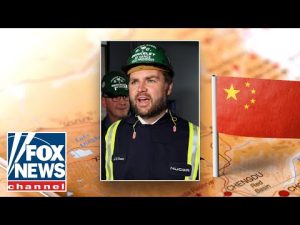China is stirring the pot yet again with allegations aimed squarely at the United States. The Chinese government has claimed that it has “substantial evidence” suggesting that the COVID-19 virus actually originated in the U.S. rather than at the infamous lab in Wuhan, where many believe the pandemic began. This twist in the tale comes after a tussle of accusations between Washington and Beijing, with China alleging that the U.S. is trying to shift blame and evade responsibility for the pandemic’s devastating impacts. Just when the world thought this saga couldn’t get any more convoluted, it seems China is more than ready to play the blame game.
The backdrop to this diplomatic drama is sprouting fresh claims from both President Donald Trump and U.S. intelligence officials, who maintain that the virus indeed leaked from a lab in Wuhan. A congressional panel and even the FBI have chimed in, suggesting that the lab leak theory holds the most weight. Meanwhile, back in China, officials are firmly sticking to their narrative, calling the lab leak theory “extremely unlikely.” It’s as if they’ve taken a page from the playbook of a magician, waving their hands to distract from the real tricks happening behind the curtain.
To add another layer of complexity, former White House COVID response coordinator, Dr. Deborah Birx, provided her insights on the matter. She walked the audience through the timeline of how the virus made its way around the globe. Remember that crucial period in late December 2019? According to Dr. Birx, the virus was likely already spreading in China at that time, even if most people weren’t exhibiting symptoms. The virus had its sneaky little ways of hopping on international flights, making its grand debut on the West Coast of the United States in late January, only to later spread its wings further across the country.
An important and often overlooked detail is the dynamics of how viruses spread. Dr. Birx highlighted that younger individuals were most likely the initial carriers of the virus, which then traveled to older populations—resulting in the soaring hospitalization rates we saw in early 2020. This nonchalant journey of the virus paints a picture of community spread that could easily have slipped under the radar. If a lab worker contracted the virus without even knowing it, that would explain how the virus could take on a life of its own, traveling from person to person like a game of tag—except in this case, the stakes were much higher.
What adds more icing to this already complex cake is the historical precedent for lab accidents. Over the years, there have been multiple incidents where researchers inadvertently released viruses into the public. Dr. Birx pointed out that this kind of mishap isn’t out of the realm of possibility. From high-profile cases related to HIV to various other contagious agents, history is peppered with lab accidents. So, while the idea of a nefarious plot from China may sound like a gripping movie plot, the reality might just be a case of human error—and a pandemic resulting from it.
In the midst of this international blame game, it’s worth pondering the qualities of transparency and accountability. As debates continue over the origins of COVID-19, one cannot ignore the lack of openness from the Chinese Communist Party regarding the virus’s early samples and data. With their consistent denials and reluctance to share information, it leads one to question whether they will ever come clean. After all, the public deserves to know the truth about what really happened at the start of this global crisis. As the world continues to grapple with the aftermath of the pandemic, one thing remains clear: accountability, transparency, and a fair amount of humor in the face of adversity are desperately needed to navigate these murky waters.







